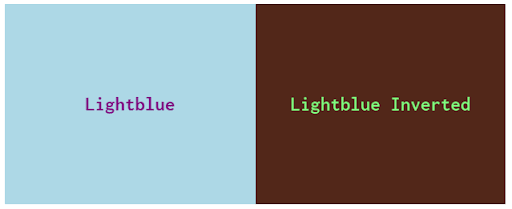An Interest In:
Web News this Week
- April 1, 2024
- March 31, 2024
- March 30, 2024
- March 29, 2024
- March 28, 2024
- March 27, 2024
- March 26, 2024
Dark Mode With One Line Of Code
Dark mode can be implemented with a single line of code. Lets see how it's done and the benefits and drawbacks of this simple approach.
filter: invert(100%)
invert() function as the value of the filter property will take the number from 0 to 1 or percentages from 0% to 100% to invert the colors of the element and its children. Applying filter: invert(1) or filter: invert(100%) results in fully inverted colors.
You can use this single line of CSS to switch the color scheme from light to dark (or the other way around).
To invert the colors of the entire website, you need to apply filter: invert(100%) on the highest-level element of the DOM:
:root { filter: invert(100%);}Applying filter with toggle button
To switch the theme, you need a toggle button and a class with dark mode styles to be toggled on the button click. Check the Codepen example below and click the button in the middle to change the color scheme:
The filter property inside the .dark-mode class is responsible for changing the colors.
/* this class will be toggled */.dark-mode { filter: invert(100%)}We must employ some basic JavaScript by targeting the document.documentElement inside the listener function. Then we can toggle the .dark-mode class on the top of the DOM hierarchy to apply the filter: invert(100%) sitewide.
let button = document.querySelector('.btn') // press the button to toggle the .dark-mode classbutton.addEventListener('click', () => { document.documentElement.classList.toggle('dark-mode')})The pros and cons of inverting all the pixels
The benefits of making your entire site switch from the light to the dark mode with filter: invert(100%) are obvious: it's a quick and dirty solution. And, like every quick solution, it also has some significant downfalls.
filter applied on the top of the DOM tree is going to cascade down and affect all the child elements. Its going to invert all the colors. It results with the following list of problems (and lets pretend that every bullet point ends with: Additional code is necessary to fix this):
- Media like images and videos gets inverted, and it never looks good (but you probably still want to have the SVGs inverted).
All dark box-shadows will become highlights.
If your website has colors other than black, white, or grayish nuances, you might be surprised by how bad some colors look inverted.
- Where there was once a sufficient contrast on the light background, things can change when color gets inverted and against the dark background.
Think about
hover,focus,active,visited, and all other special element states. Do colors convey the state of the elements when inverted or is the color meaning lost? What about interactives?Some advanced UI advice by Steve Schoger that adds to the point
https://twitter.com/steveschoger/status/1151160261170126850
This list could go on and on, dealing with all kinds of usability and accessibility details that would be sorely missed when inverting the entire color scheme. The point is - you expected to implement the dark mode with a single line of code and spent the entire day writing CSS to fix all the problems.
To invert or not to invert?
The final verdict for filter: invert(100%) is: it is super-useful for making the details look good. You could use it to switch the colors of the entire site though if your site is very simple and monochromatic.
In all other cases, you should probably try some content-aware techniques instead. For example, here is an Dark Mode - The prefers-color-scheme Website Tutorial article I wrote on implementing the dark mode with prefers-color-scheme media-query, variables, and JavaScript.
Original Link: https://dev.to/ekaterina_vu/dark-mode-with-one-line-of-code-4lkm
Dev To
 An online community for sharing and discovering great ideas, having debates, and making friends
An online community for sharing and discovering great ideas, having debates, and making friendsMore About this Source Visit Dev To




